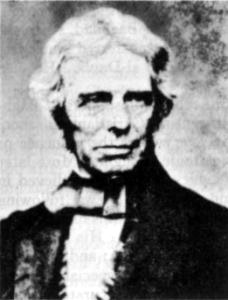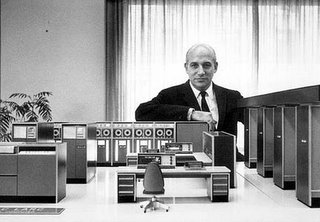
Thomas Alva Edison was born in Milan, Ohio into a middle class family. Oddly enough Tom didn't begin to talk until he was four years of age. As soon as he acquired his speech he began asking anyone and everyone how things worked. By age eleven Tom began to use the local library. At twelve Tom's parents hired a tutor because they could not understand what Tom was talking about in his numerous fields of knowledge.
Tom's first invention was the automatic repeater. It would receive and send messages between unmanned telegraph stations. Another of his early inventions was the electric vote recorder. When he tried to sell it to the legislature they rejected the idea. Tom realized that his idea was ahead of its time and way to advanced for the minds of the legislature.
In 1877 Edison invented the phonograph, even though Alexander Graham Bell had been working on the idea for years. In 83' he invented electric light, heat and power. Around 1900 he invented the first movie camera. At age 83 he began to slow down and created his 1093 patent.
Thomas Edison died at the age of 84. He died in New Jersey on October 8th 1931.
 George Westinghouse was born on October 6, 1846 in Central Bridge, NY. Westinghouse served in the civil war for two years before being made acting third assistant engineer in the Navy. In 1865 he attended college for only three months before obtaining his first patant on the rotary steam engine. In April of 1869 he designed the air brake, which allowed trains to stop reliably every time. Before this train crashes were extremely frequent. Seeing possible profit, he started the Westinhouse air brake company in July of that year. As the company kept busy he eventually developed the Automatic Air Brake, and the triple valve. In 1884 Westinghouse created the Westinhouse Electric Company. He funded Nikola Tesla thus claiming exclusive rights to his patants. He died of deteriorating health and illness. He died on March 12, 1914. He recieved a total of 361 patents to his name, the last of which he recieved four years after his death.
George Westinghouse was born on October 6, 1846 in Central Bridge, NY. Westinghouse served in the civil war for two years before being made acting third assistant engineer in the Navy. In 1865 he attended college for only three months before obtaining his first patant on the rotary steam engine. In April of 1869 he designed the air brake, which allowed trains to stop reliably every time. Before this train crashes were extremely frequent. Seeing possible profit, he started the Westinhouse air brake company in July of that year. As the company kept busy he eventually developed the Automatic Air Brake, and the triple valve. In 1884 Westinghouse created the Westinhouse Electric Company. He funded Nikola Tesla thus claiming exclusive rights to his patants. He died of deteriorating health and illness. He died on March 12, 1914. He recieved a total of 361 patents to his name, the last of which he recieved four years after his death.













